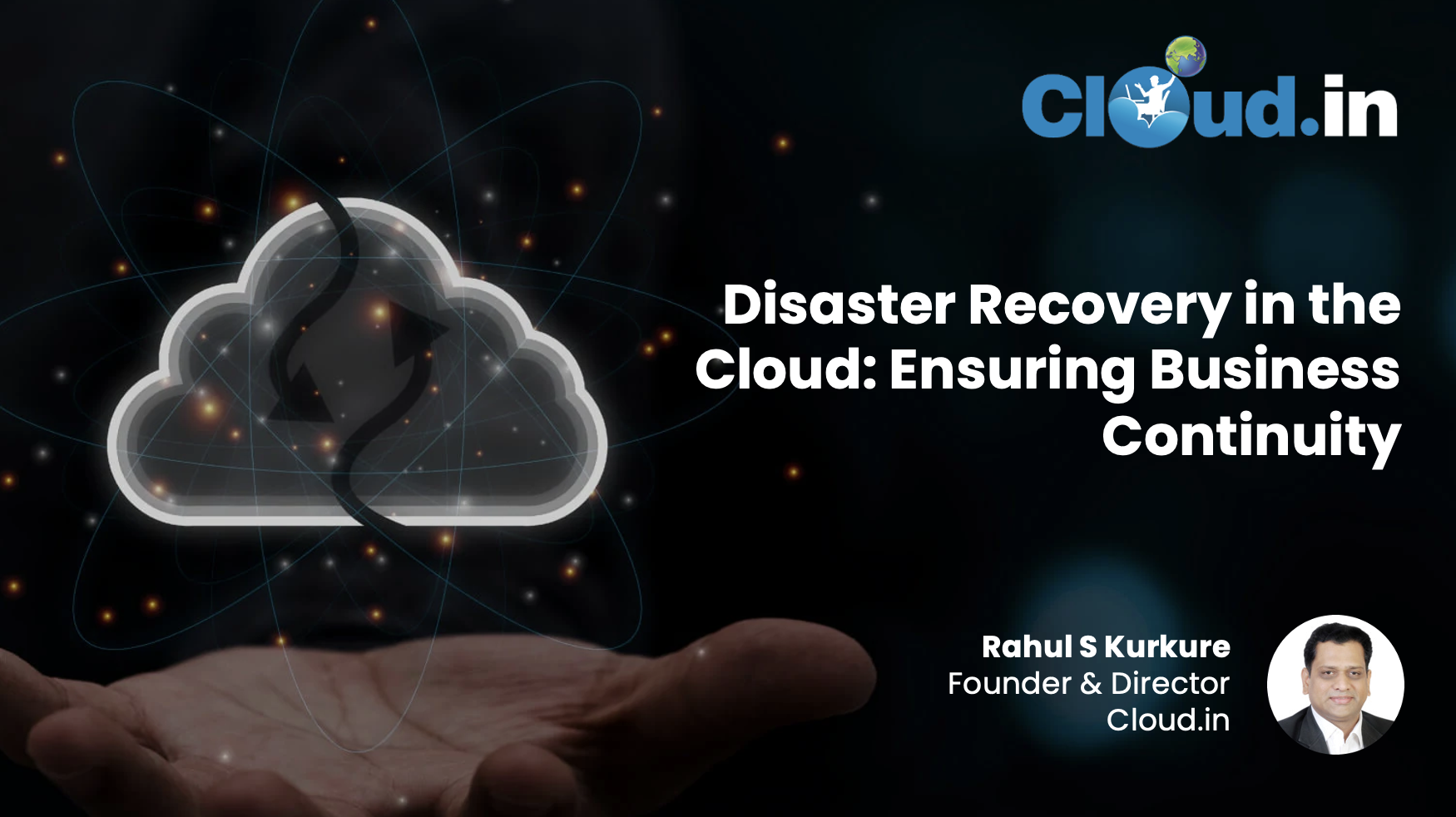Disaster Recovery in the Cloud: Ensuring Business Continuity - Rahul S Kurkure, Founder and Director of Cloud.in

In the continuously evolving digital landscape, modern-day organizations acknowledge the need to secure critical data and ensure business continuity. The possibility of enterprises falling victim to sudden events and putting themselves at risk is high without a disaster recovery (DR)plan in place. Unexpected events could occur due to power outages, equipment shutdowns, cyberattacks, or natural disasters. Under such circumstances, only a robust DR program can keep the business engine running and ensure the organization is profitable too. Such DR programs are designed for both large enterprises and SMEs to safeguard themselves from any disasters.
Disaster recovery has
evolved over time
Traditionally, the DR process was very straightforward, where data was backed up in tape drives which were physically transported by IT teams to a secondary site for storing at offsite locations. This process though effective, was complicated, time-consuming, and incurred significant costs. Now in the era of cloud computing, DR has become a lot simpler and more effective with the flexibility and scalability of cloud. These cloud-based DR solutions enhance the effectiveness in addition to streamlining the process.
Cloud-based DR
solution offers several benefits
Accessibility:
Being a key feature of cloud storage, it enables data and applications
to be retrieved from any location with an internet connection.
Scalability: The cloud offers the flexibility to
scale resources up and down based on the specific needs of businesses, enabling
the latter to adapt to changing workloads and assign resources efficiently.
Cost-effectiveness: In the absence of significant
investments in hardware, physical infrastructure, and maintenance, cloud-based
solutions are cost-effective. The
pay-as-you-go model with cloud-based solutions eliminates upfront costs
ensuring DR is accessible to businesses of all sizes.
Automated recovery processes:
The automated processes of cloud-based DR solutions enable to
streamlining of recovery tasks and automate the recovery process. This also accelerates the overall recovery
process, reduces downtime, and minimizes the risk of human error.
Better compliance: All organizations have to adhere to
regulations and a robust DR plan plays a key role here. The plan enables the
identification of potential risks with the relevant procedures and disasters
can be addressed in time ensuring the continuity of business operations.
Enhanced security: The DR plan includes data backup and
other business continuity procedures, which can protect critical data from
potential risks. DR solutions provide
robust security with identity and access management and advanced encryption
features that are incorporated into them.
Geo-redundancy: This practice of replicating and backing up data, applications, and servers in diverse geographic locations followed by cloud providers offers an added layer of protection in case of region-wide outages and hardware breakdowns. It mitigates the risk of single-point failure and guarantees business operations continuity.
Steps for business continuity and DR plan
This plan provides a
structured approach to overcome all disasters that act as a barrier to business
continuity.
Access
the infrastructure and outline the risks
A thorough assessment
of the organization’s infrastructure, systems, and data should be the first
step. Evaluate all the risks that can
have an impact on the infrastructure and each category of data. Key applications and data sets have to be
identified and all recovery efforts have to be prioritized. A comprehensive
plan that outlines all the steps to be followed in the event of a disaster
should be put in place to minimize the risks.
All stakeholders should be made aware of their roles and responsibilities.
Select
the most appropriate cloud provider
Only a trustworthy cloud partner can help
the organization with the effective implementation of the plan. Factors such as reliability, scalability,
usability, security measures, compliance standards, simplicity, and speed of
recovery should be taken into consideration while assessing an ideal cloud
provider, besides their track record in DR while selecting a cloud provider.
The larger cloud providers also offer DR as a Service (DRaaS) and have the necessary infrastructure and
expertise in addition to a global presence.
Design a plan with recovery goals in mind
The plan should be designed to address the end-to-end
recovery process, from backup to restore to cleanup. It is important to look at
the Recovery Time Objectives (RTO) and Recovery Point Objectives (RPO) before
concluding to adopt the appropriate recovery pattern to meet the criteria or
values. The recovery objectives should
establish the highest and the lowest impact on the services offered by the
organization.
Build DR cloud infrastructure
The organization should work with the cloud partner to configure different infrastructure components of the remote site in the cloud and set up each for DR. Bear in mind, the number of these components that are required, how will the data be migrated to the cloud, user authentication, and access management. The kind of security and best practices that are needed have to be implemented so that disasters are minimized which is another important aspect of building the DR cloud infrastructure. It is important to ensure that critical data is regularly backed up to a secure cloud repository in addition to real-time replication of data and applications to a secondary data center.
Regular testing of the DR plan is
mandatory
The final step is to test the DR plan regularly probably every quarter, to establish its effectiveness and address any potential issues, in time. The monitoring and analysis of the backup infrastructure have to be done daily. Various disaster scenarios can be simulated to evaluate the effectiveness of the recovery process. As the business grows and changes are witnessed across people, processes, and technologies, the plan needs to be updated to reflect the changes in the infrastructure and related aspects, ensuring the organization is prepared for any emergency.
As organizations continue to steer the expanding digital
landscape, DRi in the cloud becomes very critical. By establishing this, organizations can
protect their business operations, mitigate risks, and ensure business
continuity.



